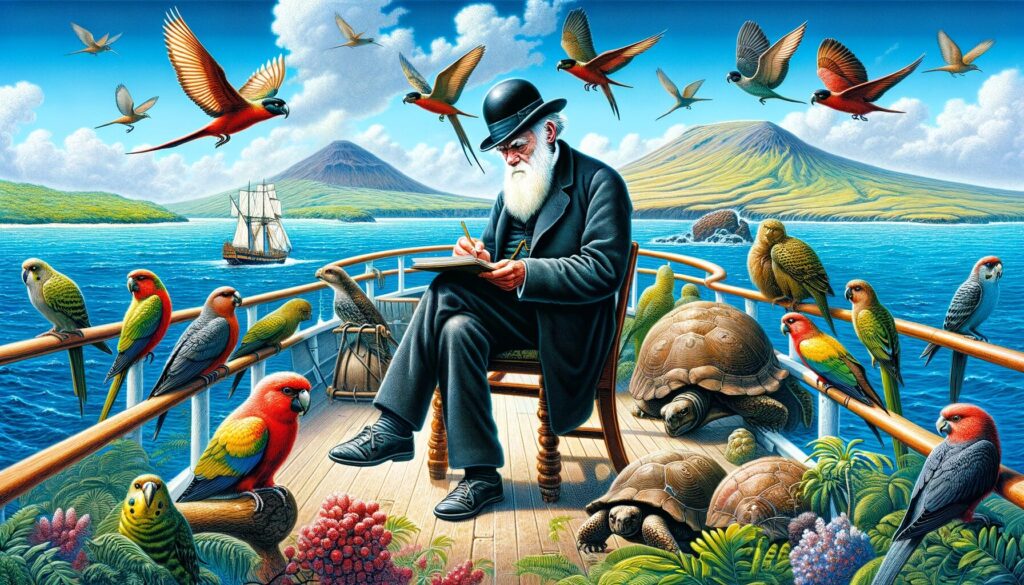Reading
In the early 19th century, a young naturalist named Charles Darwin embarked on an adventure that would enrich our understanding of the natural world. Aboard the HMS Beagle, Darwin set sail on a voyage intended to map the coast of South America. However, what he discovered on this journey would weave a new tapestry of scientific understanding.
Darwin was fascinated by the variety of life forms he encountered, especially on the Galápagos Islands. Each island boasted fantastical creatures, such as finches with uniquely shaped beaks, adapted to their specific environments. These observations rekindled a curiosity in Darwin that led him to ponder the origins and adaptations of species.
Over the years, Darwin meticulously collected specimens and recorded his observations. Through this wealth of data, he wove together the groundbreaking theory of natural selection, proposing that species evolve over time through a process of adaptation and survival of the fittest.
Darwin’s time on the Galápagos Islands was transformative. Surrounded by unique species, he saw nature’s diversity as pieces of a larger puzzle. This experience was pivotal; it not only enriched his scientific perspective but also rekindled a broader dialogue about life’s dynamic evolution. Here, amidst this natural laboratory, Darwin’s theories took shape, weaving together observations into a coherent narrative that challenged the era’s static views on life.
Darwin’s work enriched the scientific community, challenging existing beliefs about the creation and development of life. His legacy is a testament to the power of exploration and inquiry in unlocking the mysteries of the natural world.
Reading-Checkup Quizzes
- What was the primary purpose of the HMS Beagle’s voyage?
- A) To collect exotic animals
- B) To map the coast of South America
- C) To discover new lands
- What significant observation did Darwin make in the Galápagos Islands?
- A) All finches had the same type of beak
- B) Finches on different islands had differently shaped beaks
- C) The islands were uninhabited
- What theory did Charles Darwin propose based on his observations?
- A) The theory of relativity
- B) The germ theory of disease
- C) The theory of natural selection
Discussion Questions
- How did Darwin’s discoveries rekindle our understanding of the natural world?
- In what ways has the theory of natural selection enriched our understanding of life on Earth?
Interactive Activity
if you had time, please go watch the video to deepen your understanding about Charles Darwin.
Watch the Video: “Charles Darwin – The Theory of Natural Selection”

